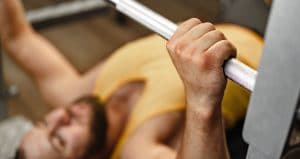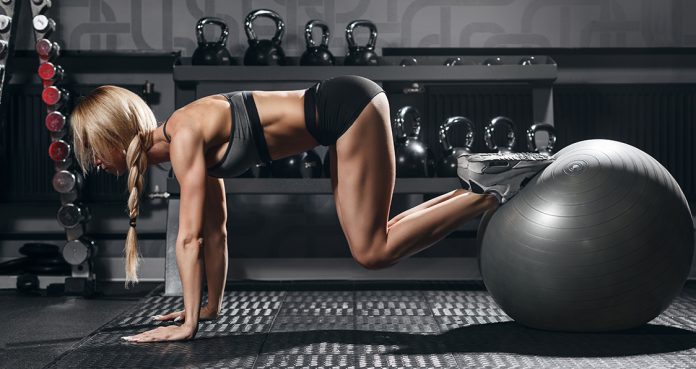Tag: progress

How to Continually See Progress in the Gym
Build muscle and see progress after workout by using these tips.
Progress isn’t always linear. In fact, unless you’re a novice lifter, progress may be fairly stagnant at times. You’re not always going to be blessed with noobie gains. The kind of gains someone makes when they just start lifting and can get basically get bigger just by looking at a set of dumbbells.
The longer you train, the harder it is to see progress. And as you mature into your training age, the more important the details of your training become to elicit adaptation.
Here are some proven methods you can incorporate into your program to continually see progress in (and out of) the gym.
USE INDICATOR EXERCISES
While working out is obviously better than doing nothing, it lacks any clear direction. You mosey around the gym looking for something to do without any clear goals. Training, on the other hand, implies each of your workouts act as “building blocks” to your ultimate goal. In order to understand which goals you should be setting and to add meaning to your workouts, you can use indicator exercises.
Indicator exercises or indicator lifts are movements you use to gauge your progress overtime. They tell you whether or not your program is actually working! If you can lift heavier weight or successfully complete more reps overtime, then you’re doing something right. If not, it may be time to revaluate your approach to training.
Why You Should Use Indicator Exercises
Performance-based goals lead to aesthetic-based outcomes. Training to perform better will ultimately make you look and feel better.
They give intent to your workouts. That alone, will spark a fire under your ass and breed new life into your training.
They give you direction. No more wandering around the gym trying to figure out what you’re doing next or which machine you’re going to use as a seat warmer. You’ll know which exercises you should be doing because they should only be ones that benefit your indicator lifts.
They increase the intensity of your workouts. Indicator exercises give you something clear to train for and, as a result, increase the intensity of your workouts.
How to Choose Your Indicator Exercises
Pick 3-4 lifts for your indicator exercises. As Joe DeFranco recommends, it’s ideal to use upper and lower body movements. This stops you from deviating too heavily into one direction of training and allows for a more well-rounded program.
Your indicator exercises don’t have to be the major barbell lifts, either. On the contrary, most people would find benefit in using joint-friendlier alternatives when setting strength goals in the gym.
At the end of the day, there’s no right or wrong way to choose your indicator lifts. But here are some suggestions to help you get the ball rolling.
Examples of Upper Body Indicator Exercises
Chin-Up
Bench Press
Floor Press
Examples of Lower Body Indicator Exercises
Trap Bar Deadlift
Box Squat
Rear Foot Elevated Split Squat
Once you determine which indicator exercises you’ll use to gauge the success of your program, it’s relatively easy to decide which exercises to do throughout your program. Just pick the ones that will improve your indicators.
ADJUST YOUR RANGE OF MOTION
An exercise’s range of motion is determined by the distance your joints are moving during the lift. This has direct implications on the amount of time your muscles are under load or stress during an exercise and, as a result, can significantly affect how your body responds.
Not all range of motions were created equal. If you can’t do full ROM biceps curls with 20lb dumbbells, it’s probably not a great idea to let ego take over and do ¼ reps with the 40’s. Often times, simply reducing the weight you’re lifting and performing an exercise through it’s full intended range of motion will elicit the muscle adaptation you’re looking for.
That said, a greater range of motion doesn’t always mean a better range of motion. Sometimes, partial reps can be very beneficial from a hypertrophy and strength perspective.
You can use partial reps by reducing the ROM of an exercise in order to overload a portion of the lift or place greater emphasis on a particular muscle group. A few examples include:
High box squats to increase lockout strength in the back squat and quad development.
Floor presses to increase lockout strength in the bench press and triceps development.
Rack pulls to increase lockout strength in the deadlift.
Partial overhead dumbbell presses to emphasize the delts.
Most people complaining about not seeing progress in the gym are the same ones who have a “broken record” training program. They do the same shit day after day, week after week, year after year.
A simple and highly effective way to continually elicit muscle adaptation is to introduce various ranges of motion throughout your program.
PAIR EXERCISES WITH SUPERSETS OR TRI-SETS
Pairing exercises together into a superset (two exercises performed back to back) or even a tri-set (three exercises performed one after the other) offers great benefits, including:
Time management. Accomplish more work in your training session.
General conditioning. Supersets and tri-sets are proven ways to improve your overall conditioning.
Added mobility work. I know, you’d rather read the dictionary in it’s entirety than do mobility or stretching. I get it. That’s why pairing mobility drills in between your lifting sets might be something to consider. You’re going to be resting anyways, so you can kill two birds and get some necessary mobility in. You’ll feel better and you’ll recover better. Both of which are pretty damn important if you want to lift and build muscle.
Muscle development. This one should be obvious. And there are a ton of ways you can organize your supersets and trisets to see continuous progress and battle the monotony of your stale workouts. Read my article on Best Supersets to Build Muscle for some ideas.
Summary
The longer you train, the harder it becomes to see progress. Use these strategies throughout your program to battle stagnation in the gym and to continually elicit muscle adaptation.

Read This To Make Continuous Progress in The Gym
Make Constant Progress With These Tips
If you have been working out for some time, chances are you know what it feels like to hit a plateau. Hitting a plateau is the feeling you get when you’re hurdling but in place of a hurdle, there’s a wall, and no matter how fast you run, you can’t pass through it.
Making constant progress year-on-year is something everyone wants but only a few get. In this article, we’ll be sharing the tricks the pros use to make continuous improvements and avoid hitting roadblocks.
Keep Challenging Your Body
You aren’t going to keep improving until you keep challenging your muscles. Every time you’re in the gym, do something to shock your body. Lift heavier weights than you did the last time, try a new training technique or triple the number of reps you usually perform.
Once your muscles get used to your way of training, it’s game over for you. A good rule of thumb should be, if you’re comfortable in the gym, you’re doing it wrong. If you follow some of the pros on social media, you’ll see them taking their bodies through grueling workouts, and that is the secret to their success.
Keep Your Recovery On Point
Most people make the mistake of underplaying the importance of recovery in their transformation. They think the only thing that matters for muscle building is how hard they train.
It may come as a surprise to some people, but the role of the right diet and recovery combined form a bigger part in a body transformation as compared to training alone. Make sure your nutrition plan and recovery schedule is in line with your goals.
Shake Up Your Routine
Following the same routine day in and day out can become monotonous. Nothing exciting comes your way if you’re leading a boring life. You need to shake things up constantly to see constant progress.
If you have been following the same diet for a long time, it might be time to try something new. Switching to a new gym or finding yourself a new training partner or a coach can be enough to spark new growth.
Expand Your Knowledge
With the advancement in research in fitness, new things are being discovered constantly. Keeping yourself updated with the developments in the sport can help keep your progress graph pointing upwards.
The more you learn, the better understanding you’ll have of things you’re doing, and ways to make them more effective. Also, knowledge is what separates the pros from the gym bros.
Take A Break
Sometimes when people are stuck in a plateau, they try to push themselves harder in the gym which can do more harm than good. Overtraining is one of the most talked-about and yet misunderstood concepts in fitness.
Overtraining can take a toll on your central nervous system (CNS) and impair your body’s ability to make progress. If you’re not successful in breaking through the overhead ceiling, it might be better to take a break and give your body time to recover.
Have you ever been injured in the gym? Let us know in the comments below. Also, be sure to follow Generation Iron on Facebook, Twitter, and Instagram.
*Header image courtesy of Envato Elements
